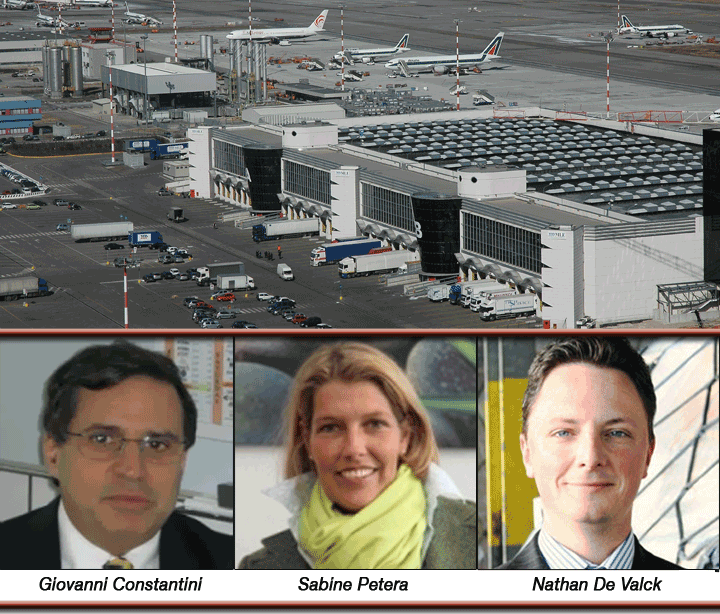
Some leading international air
cargo gateways were at Air Cargo Handling (ACH) Milano this past September.
Here we present Part Three of our exclusive series with a deeper look
into the session content at ACH Milano. Part Three will be followed by
in-depth analysis of TIACA Seoul held in October, and finally FIATA Istanbul
held in November.
 |
At ACH great thoughts
were advanced detailing the role of airports in coordinating the cargo
community.
Participants included Sabine Petera, director
cargo services, Vienna Airport; Nathan De Valck, cargo account manager,
Brussels Airport Company; and Giovanni Constantini, cargo manager, SEA
Milan Airports.
Starting with Vienna, Sabine Petera told
the audience that Vienna Airport had a throughput of 256,193 tons in 2013
with a mix of trucking and air cargo. There the focus is on speed with
short acceptance deadlines for export cargo and competitive delivery times
for import cargo. Vienna airport have built a computer system interface
between Vienna Airport Cargo services and forwarding agents to enable
the sharing of data.
Vienna Airport allows direct access to apron
for certain stakeholders, but strictly in accordance with EU directives.
Meanwhile, projects include the development of infrastructure including
Cargo City Sud (long term planning).
The airport is ISO 9001 certified and has
an internal system for monitoring quality and to support regular inspections
by Austro control regarding dangerous goods.
They hold regular coordination and information
meetings with stakeholders, and topics include improvements, e-AWB, efficiency,
flexible staff assignment, training (including security and safety) planning
tools for cargo, and lean/simplified processes.
Nathan then introduced Brussels Airport,
voted cargo airport of the year in 2014.
The objective is to develop BRUcargo as
the preferred logistical hub with support for pharmaceuticals, time sensitive
products, live animals, outsized cargo, perishables, valuables, and general
cargo. Brussels airport acts as a facilitator and ensures stakeholders
are more productive and able to contribute to the long-term future. 210
million euros is being spent on current infrastructure, including warehouse
redevelopment and changes to office infrastructure. BRUcargo are able
to bring stakeholders together to do business using neutral position.
Furthermore, the secured gateway programme will make BRUcargo the most
efficient and secure cargo area.
BRUcargo are also developing a cloud solution
to enable stakeholders to do business. They have also created a pharmaceutical
certification programme with the objective of improving pharmaceutical
handling. The programme will include audits of the stakeholders.
Finally, Giovanni provided insight into
Malpensa. Malpensa Airport takes on the role of coordinating the community,
recognizing that this also includes engaging the public authorities and
balancing different perspectives and needs. An investment of 70 million
euros for urbanization works on the aircraft apron will help support the
target to double freight handling from 500K tonnes to 1 million tonnes
per year. This will be further supported
by an additional first line warehouse.
Malpensa Airport has developed a cargo service
charter with the aim to improve reliability and on time performance, e.g.,
cut off times for departing cargo times and for cargo availability after
flight landing. They conduct quarterly meetings of the cargo-working group
and canvass opinion through a customer satisfaction survey.
In terms of facilitation, Malpensa Airport
have lobbied Customs to activate single window procedure for customs and
health procedures and are developing a common access platform for exchanging
information aiming to simplify the access and information sharing between
all parties.
Additionally, a greater presence of Road
Feeder Services in Northern Italy represents an opportunity to increase
market share.
It is great to see airports taking an active
role in identifying and resolving issues, and even better to see them
taking an active role in supplying solutions to unite the various stakeholders.
If anyone can bring all parties together to do business, then the airport
authorities can. We feel this level of participation benefits the entire
supply chain and should be adopted elsewhere as well.
Geoffrey/Flossie
For Part I click here
For Part II click here |





